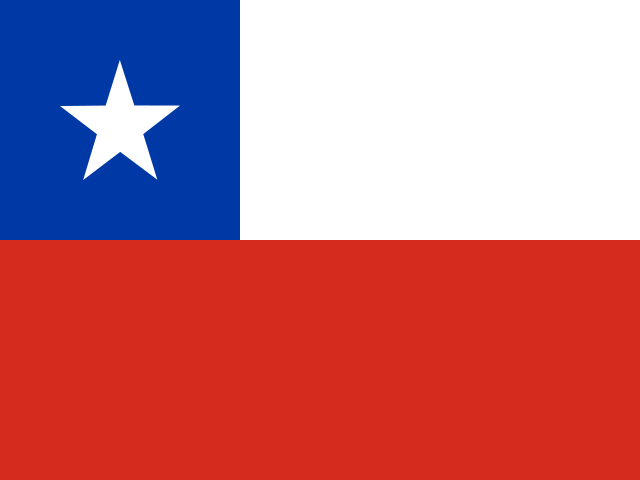
Chile
Chile’s media is dominated by a number of private national and local broadcasters, with two commercial groups owning the bulk of print titles. The news media have been tested by a series of dramatic political events since popular protests in 2019.
A new constitution, which had been written in a complex process designed to build consensus in Chile, was strongly rejected in a referendum in September 2022, meaning the whole drafting process began again. In recent years, politics and news coverage have become central features of the media’s output, but when the new constitution was rejected, discussion moved on to other subjects such as debating crime and law enforcement news.
It is possible that, following a period which has seen riots, COVID-19, a contentious presidential election, as well as several other elections, news consumers are now experiencing a certain amount of news fatigue. Four in ten (40%) of respondents to our Digital News Report survey say they sometimes or often avoid the news, slightly up on last year. National politics was one of the news subjects mentioned as most likely to be avoided, according to survey respondents.
More widely, the role of journalism and the performance of individual journalists has come under scrutiny during this time, especially on networks like Twitter, even if the level of debate is not quite at the peak seen during the referendum. One high-profile example was during the coverage of wildfires which broke out in central and southern Chile before Christmas, with major loss of life and homes. TV networks covered the fires extensively, and some sent news anchors to the affected areas. Audience members accused some reporters of insensitivity, but praised others for not conducting interviews in moments of vulnerability or turning off cameras altogether.
Clips of what the audience saw as good or bad practice went viral on social media as Chileans adopted ‘second screen’ news consumption – something news organisations themselves encouraged by exploring news formats on TikTok and live newscasts on YouTube. TikTok has been the fastest growing social platform in the last year and is used by almost four in ten (39%) of our sample, with 18% saying they have used the network for news in the last week.
In spite of efforts by TV stations to engage with the news seriously, the economics of the news media remains precarious, and job losses are common. One of the most visible cases was that of La Red, a television station which was included in this report for the first time last year as it focused more on serious news coverage rather than an agenda of entertainment. After months of not paying salaries, La Red went bankrupt, changed its CEO, and switched its entire programming away from live political news to reruns of old TV series and films. It is now almost a different station and its trust figures suffered as a result.
Chile's only free-to-air public television channel, Televisión Nacional de Chile (TVN), is also continuing to struggle. Private television stations like Mega and Chilevisión (CHV) continue to be more popular, and Televisión Nacional has had to resort to renting some of its facilities commercially to audiovisual production companies. Television brands remain the most popular sources for online news, but it is the significance of audiovisual material including hybrid formats such as live-streamed radio shows or newspapers emphasising video clips which is most evident throughout the media industry.
Chile has two big newspaper groups, La Tercera, owned by conglomerate Copesa, and El Mercurio, the nation's paper of record. Both newspapers currently have paywalls in place, but El Mercurio also runs a separate online portal called Emol which provides free access supported by advertisements.
The magazine The Clinic appears to have become an example of the audience’s changing tastes away from politics. Traditionally considered a partly satirical magazine, it was acquired by a company which intends to seek younger audiences with entertainment and cultural stories.
One of the debates that arose during recent political events was the need for a law to regulate the media. Proponents argued that new legislation was needed to guarantee pluralism and combat concentrated ownership, while opponents worried about potential risks to freedom of expression and blocking the entry of new commercial actors. This discussion will be reopened. Bills have also been proposed to address the danger of fake news. However, there has been little progress due to the lack of consensus on how to define misinformation or who should be responsible for determining the truth.
Francisco J. Fernández and Enrique Núñez-Mussa
Pontificia Universidad Católica de Chile / Michigan State University
Changing media
Traditional sources such as television and print have both declined significantly over the last seven years. But online and social media are also declining, suggesting news fatigue may be setting in to some extent at least.
Pay for online news
11%
Listen to podcast in the last month
39%
Trust in news overall
35%
(=) 28/46
Trust in news I use
36%
Trust in the news continues to be low (35%) as in previous years, with a 3pp fall overall. After an economic bankruptcy and a significant reduction in personnel, trust in TV station La Red decreased. At the same time, trust in the conservative newspaper El Mercurio increased, which may reflect a new political scenario in the country following the rejection of the draft for a new constitution last year.

